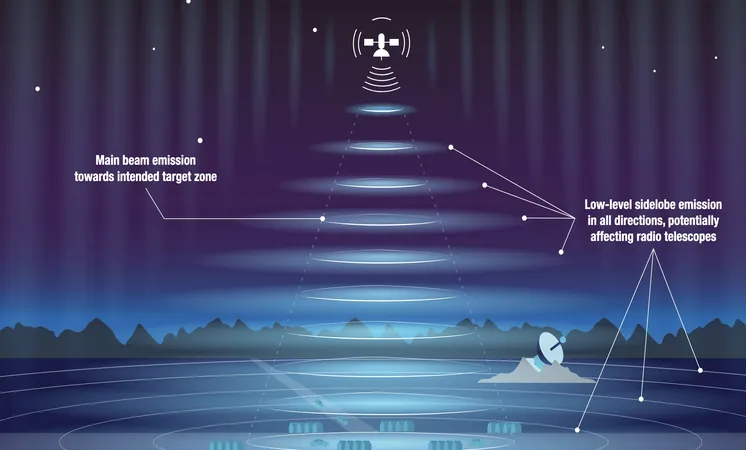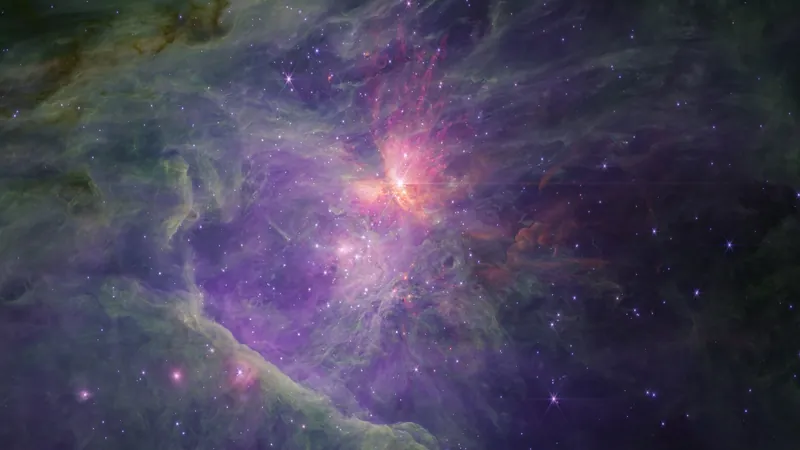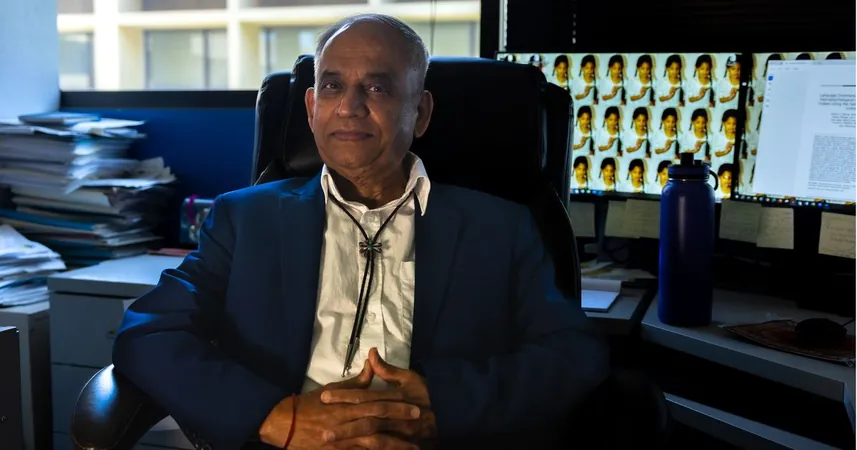
The Race Against Time: Astronomers Fight to Preserve the Night and Radio Sky Amidst Satellite Megaconstellations
2025-01-08
Author: Jia
When was the last time you marveled at the breathtaking sweep of the Milky Way stretched across the night sky? If you're nestled in a remote corner of the planet, perhaps it was just last night. But for countless others, particularly those residing in increasingly urban areas, the answer is often a stark “never.” The celestial wonder that once inspired poets and scientists alike is fading from our collective experience, accorded little more than a fleeting memory.
The culprit? Light pollution, exacerbated by the proliferation of bright LED lights, particularly the glaring blue and white varieties, has slowly obscured the night canvas. Iconic astronomical hubs like Griffith Observatory now struggle against this luminous tide as modern telescopes must venture further into remote locales in search of darkness. Yet, light pollution doesn’t just affect optical astronomers—radio telescopes face a similar challenge from our tech-driven world, drowning in a sea of radio waves generated by everything from smartphones to automotive sensors.
The modern adversary to our perception of the cosmos has taken on a new guise: satellite megaconstellations. Companies such as Starlink have launched a staggering number of satellites, manifesting even in the most secluded regions of our globe and painting streaks across the sky at dusk and dawn. While these optical nuisances can sometimes be mitigated—minimizing their reflectivity, for instance—radio telescopes face a more intricate battle.
These satellites don’t merely float silently; they actively transmit radio signals, akin to floodlights perpetually aimed at Earth. The reception of this constant barrage complicates measurements for radio observatories, leading to alarming potential for contamination in their observations. Although some regions, like the National Radio Quiet Zone, enforce restrictions on satellite operations, these measures are far from foolproof. A recent study has highlighted that even when satellites reduce their output, they still cast an invisible shadow, with stray signals muddying the pristine radio waves that researchers desperately seek.
The need for action has reached a critical juncture. The International Astronomical Union (IAU) Centre for the Protection of the Dark, Quiet Sky from Satellite Constellation Interference (CPS) is now urgently calling for the international community to enact definitive regulations that safeguard the future of ground-based astronomy. The stakes could not be higher.
While it's undeniable that satellite networks like Starlink are essential for bridging the digital divide in many underserved regions, we must also pause to reflect on what future generations might lose. Our connection to the night sky is intricately woven into the fabric of human culture and mythology, and without concerted efforts to preserve it, we risk erasing an irreplaceable heritage from our collective consciousness.
The battle between technological advancement and environmental preservation will require a profound balance. As we stand on the brink of a new era defined by connectivity, we must acknowledge the wonders of the universe that we stand to lose and commit to protecting the very night sky that has inspired humanity throughout the ages. Can we find a way to harmoniously coexist with technology while preserving our connection to the stars? The answer may lie in a collaboration that respects both our history and our future—a challenge worth tackling for the sake of humanity’s relationship with the cosmos.




 Brasil (PT)
Brasil (PT)
 Canada (EN)
Canada (EN)
 Chile (ES)
Chile (ES)
 Česko (CS)
Česko (CS)
 대한민국 (KO)
대한민국 (KO)
 España (ES)
España (ES)
 France (FR)
France (FR)
 Hong Kong (EN)
Hong Kong (EN)
 Italia (IT)
Italia (IT)
 日本 (JA)
日本 (JA)
 Magyarország (HU)
Magyarország (HU)
 Norge (NO)
Norge (NO)
 Polska (PL)
Polska (PL)
 Schweiz (DE)
Schweiz (DE)
 Singapore (EN)
Singapore (EN)
 Sverige (SV)
Sverige (SV)
 Suomi (FI)
Suomi (FI)
 Türkiye (TR)
Türkiye (TR)
 الإمارات العربية المتحدة (AR)
الإمارات العربية المتحدة (AR)